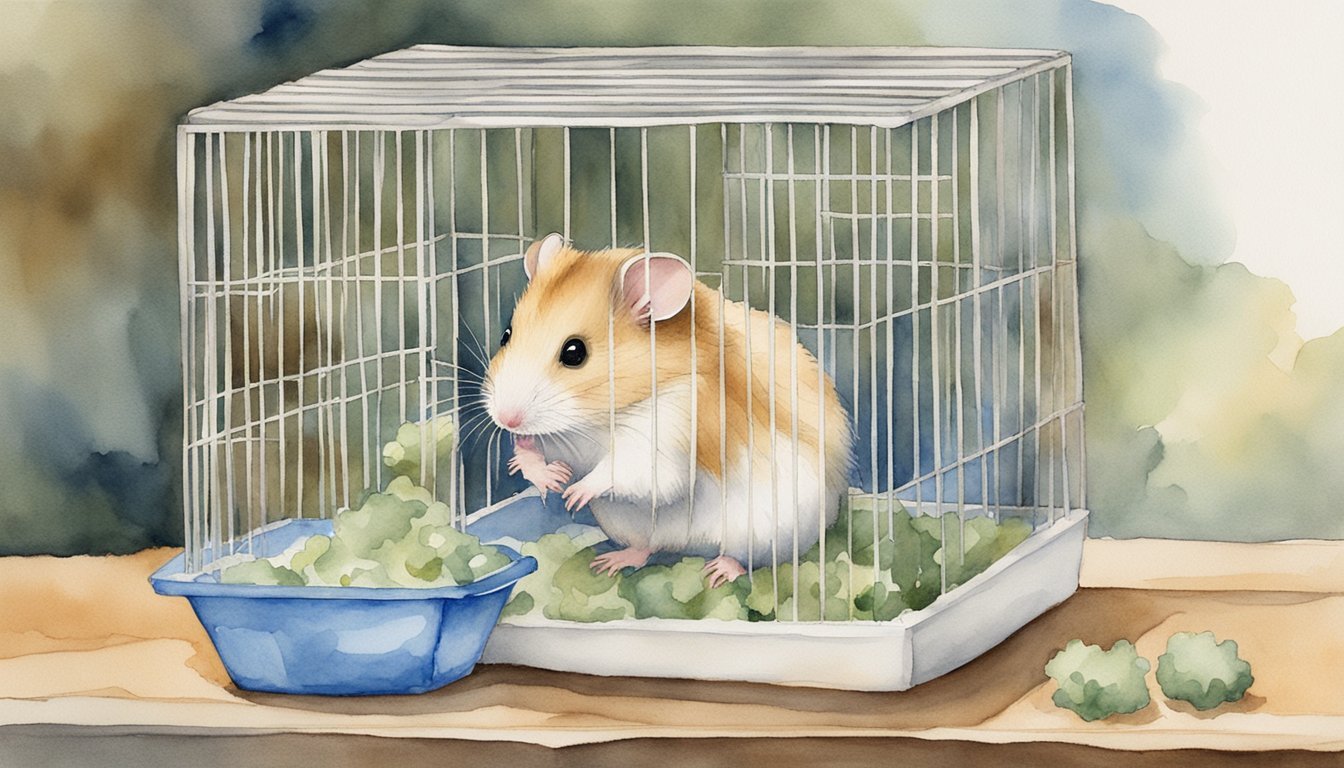Getting to Know Hamsters
Hamsters are small, furry rodents that have become popular household pets. In this section, we’ll explore their varieties, distinct physical characteristics, and unique behavioral patterns.
Introduction to Hamster Varieties
The hamster family, Cricetinae, is diverse, with multiple species commonly kept as pets. The well-known Syrian hamster, or Mesocricetus auratus, is also called the golden hamster due to its original coat color. Dwarf hamsters, which include the Phodopus genus, such as the Roborovski and the Chinese hamster, are smaller and have differences in their care requirements compared to their Syrian cousins. Learn more about the different hamster species.
Hamster Anatomy and Physical Features
Hamsters possess distinct anatomical features including elongated cheek pouches for food storage—a handy adaptation for foraging. These small pets have strong teeth that continuously grow, requiring a diet that helps wear them down. With a short, stubby tail, thick fur, and scent glands used for marking territory, hamsters are adapted to their native environments. The physical characteristics vary between species, from the Syrian hamster’s larger size to the tiny frame of a dwarf hamster such as the Roborovski. Read about hamster anatomy.
Behavioral Traits and Lifestyle
Hamsters are primarily nocturnal, which means they are most active during the night. This can range from running on their wheel to burrowing into their bedding. Syrian hamsters are solitary and can be territorial if housed with others, while dwarf hamsters may enjoy the company of their kind when conditions are appropriate. All hamsters exhibit a love for digging and creating burrows, a natural behavior that provides both exercise and security. Find out more about hamster behavior.
Caring for Your Hamster

Proper care for pet hamsters involves creating a secure habitat, providing a balanced diet, maintaining cleanliness for health, and ensuring enrichment for their well-being.
Creating a Comfortable Home
A suitable home for your pet hamster should mimic their natural environment to satisfy their instinctual needs. The hamster cage should be spacious, with a solid base and proper ventilation to prevent harmful ammonia build-up. Substrate bedding made of paper or aspen shavings can absorb moisture and odors, providing comfort and a place for burrowing. Regularly change the litter and ensure the cage is cleaned weekly to maintain a clean cage.
- Cage size: Minimum 24 inches by 12 inches, and at least 12 inches tall.
- Bedding depth: 1-2 inches for lining, 6 inches for burrowing areas.
Include various tunnels or cardboard tubes and a quiet place for the hamster to sleep and hide. Hamsters are particularly sensitive to stress, so a peaceful location away from loud noises is crucial for a healthy hamster.
Hamster Diet and Nutrition
Hamsters are omnivores, and their diet should consist of high-quality commercial hamster food, fresh fruits and vegetables, as well as a selection of grains and seeds. To prevent dietary imbalances, a controlled portion of seed mix is suggested, avoiding over-supplementation that can lead to obesity.
- Food types: Seed mix, lab blocks, fresh fruits and vegetables.
- Feeding schedule: Daily, with fresh water provided consistently in a water bottle.
Keep in mind that some foods, like onions and chocolate, are toxic to hamsters and must be avoided.
Health and Hygiene
A healthy hamster is an active hamster. Regularly inspect your pet for any signs of illness, such as lethargy, hair loss, or breathing issues. Health checks also include monitoring their feces for changes that might indicate a problem. While hamsters clean themselves, occasionally they may need a gentle wipe with a damp cloth, but never bathe them as this can cause stress and colds.
- Frequency of cage cleaning: Once a week, with spot cleaning as required.
- Health checks: Weekly visual inspections, veterinary visits for concerning symptoms.
Note that hamsters have poor eyesight which increases their reliance on other senses and their need for a stable living environment.
Social and Entertainment Needs
Despite being solitary animals, hamsters benefit from environmental enrichment for mental and physical stimulation. Offer a variety of chew toys to satisfy their natural gnawing behavior, which also helps to keep their teeth from overgrowing. Exercise wheels and climbing structures promote activity. Diversify their entertainment with makeshift obstacle courses and safe items for burrowing.
- Essential accessories: Wheel for running, chew toys, hideouts.
- Optional activities: Exploration balls, tunnels for play.
While dwarf and Syrian hamsters have differences in social needs, all hamsters require some form of interaction and activities that can stimulate their curiosity and maintain a fun atmosphere. Provide nesting material like unscented paper to allow them to build comfortable nests.

